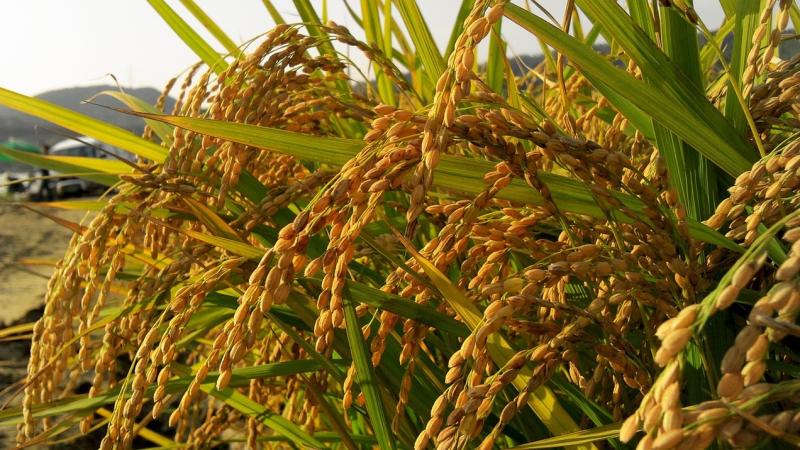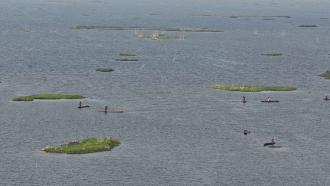
Very soon, the shortage of water and population explosion in the world may cost you your plate of biryani, and for many, their livelihood. Rice, a staple food for over 3.5 billion people in the world, is facing a threat in recent years due to the scarcity of water across the globe. Traditionally, rice is a water-intensive crop, grown by puddling water in the fields. The mounting pressure to conserve water in agriculture makes rice an obvious target because it requires about 4000-5000 litres of water to produce a kilogram of the grain! Hence, researchers across the world are developing rice varieties that consume less water and can grow in non-puddled fields with aeration. Such rice is called ‘aerobic rice’.
In a recent study, researchers from ICAR-Indian Institute of Rice Research, Hyderabad and Telangana State Agricultural University, Hyderabad, have identified essential genes that help in the adaptation of aerobic rice to water-scarce conditions. The researchers have sequenced and quantified the RNA (ribonucleic acid), found in the cells of the rice plant, to reveal the genetic mechanism of a cell at the molecular level. The study was published in the journal Scientific Reports and funded by the University Grants Commission.
The researchers studied the root and shoot systems of two varieties of rice—an aerobic variety (CR Dhan 202) that can grow in well-drained, water-scarce conditions and another variety (BPT 5204), which is grown conventionally with water puddled in the fields. They analysed the RNA present in the tissues of the root and shoot and decoded the patterns of the thousands of RNA present in the cells through a technique called next-generation sequencing.
Based on the results of the sequencing process, the researchers categorised the genes into three types. The first category was transcription factor genes, which are responsible for producing proteins. Transporters genes, the second category, made specific proteins that help in the to-and-fro passage of glucose and other nutrients into the plant cells. The third category of genes were root trait-associated genes, which provide specific features to root, such as its length and depth, that are necessary for its functioning.
The results of the study showed that the root system of rice plays a more significant role than the shoot, in acclimatising the plant to aerobic conditions present in a water-scarce environment. One of the critical genes expressed in roots was a transcription factor gene called DREB1F, which produced 1.5 times more proteins in aerobic conditions than in anaerobic conditions. Besides, the transporter gene for inorganic phosphate, PHT1;6, expressed 4.42 times more in the aerobic variety compared to the other, indicating its role in the adaptation. A root trait-associated gene, OsMT2A, was expressed almost three folds more in the roots of the aerobic variety, suggesting the sensitive role of roots in water-deficit conditions.
“The genes highlighted in this study can pave a path for others to implement the idea of genetic improvement of rice to cope with the unavailability of water. Besides, similar ideas can be extended to other important crops too”, say the researchers about their findings. They also found evidence for some hormones, like ethylene and abscisic acid, in imparting aerobic adaptation. “The mechanism of aerobic adaptation, to some extent, follows that of drought tolerance”, they add.
This study is the first to have unravelled the genetic mechanism behind the adaptation of rice to aerobic conditions. The researchers believe that this knowledge can be used to develop more varieties that can be grown in water-scarce regions and help feed the world in times of drought and despair. For a country like India, which is the second largest producer of rice with 105.4 million tonnes, and with just half of its rice-cultivated land under irrigation, the study gives hope that one would not have to starve as water scarcity grips the world.






